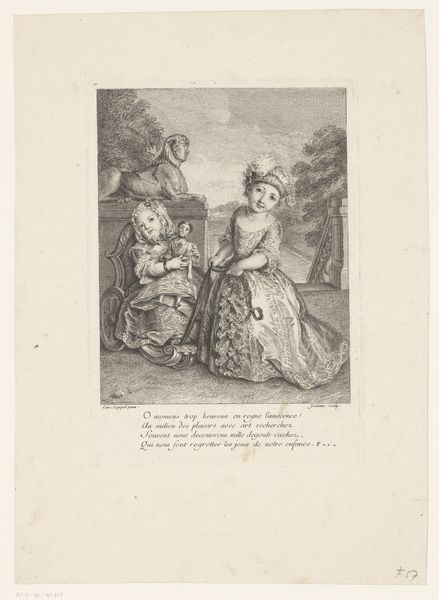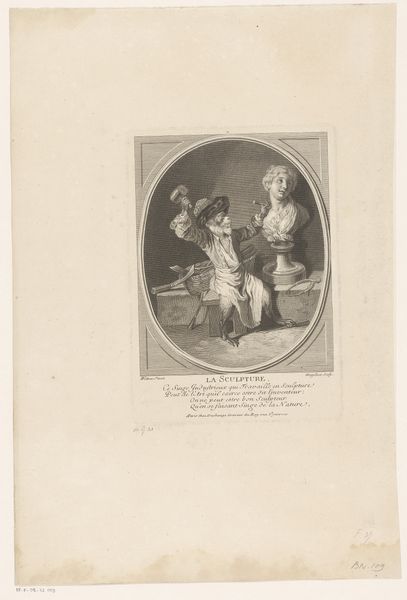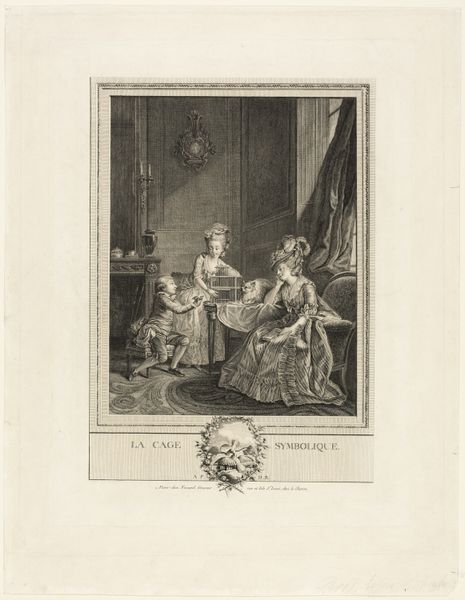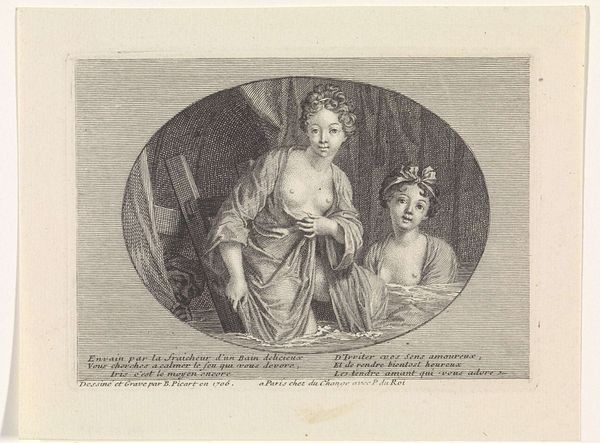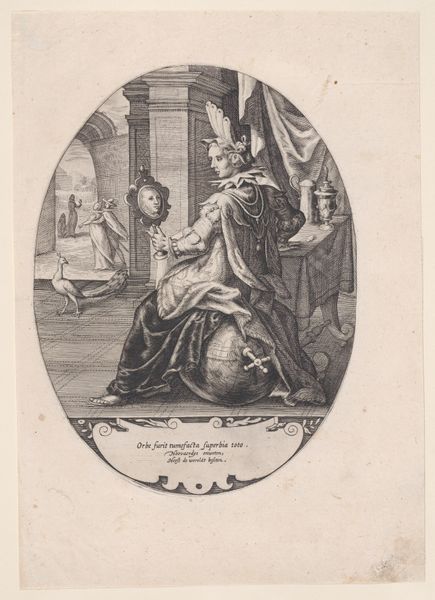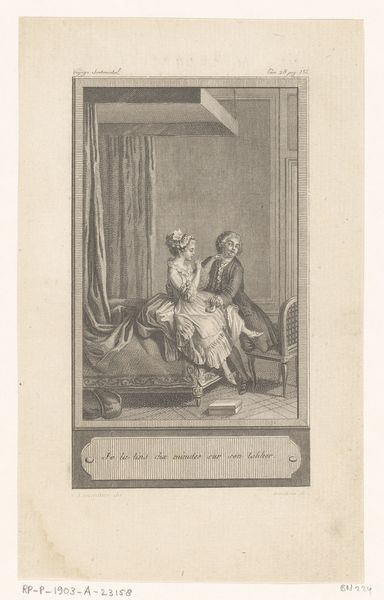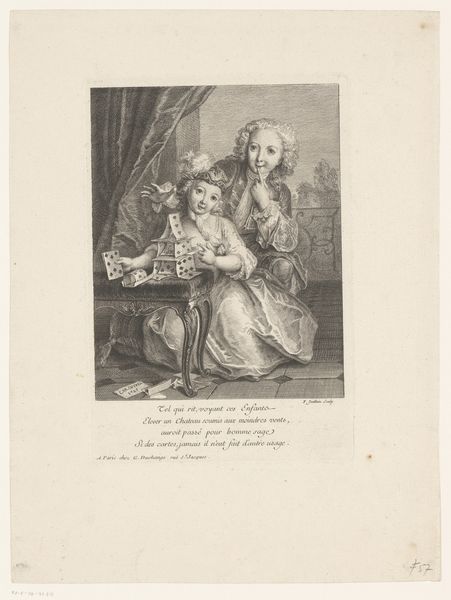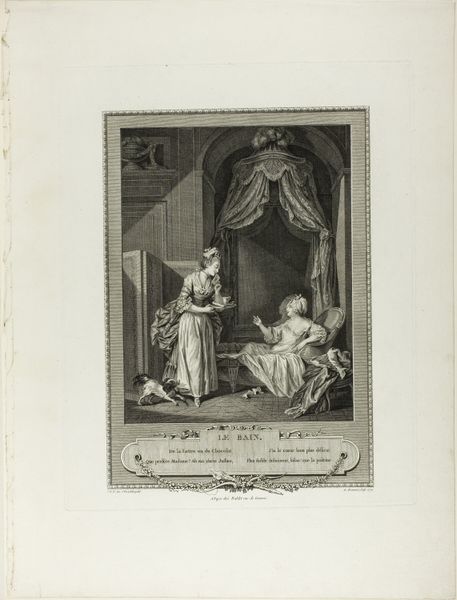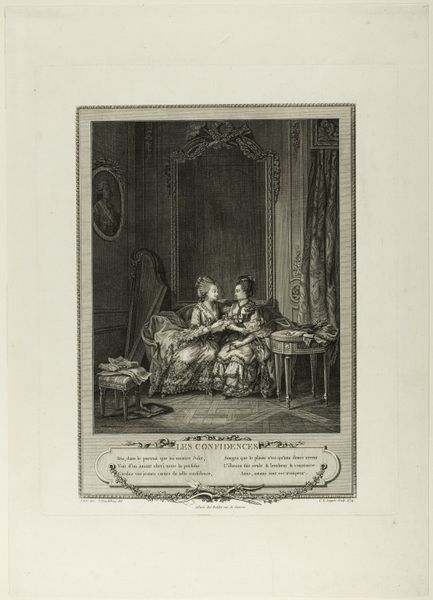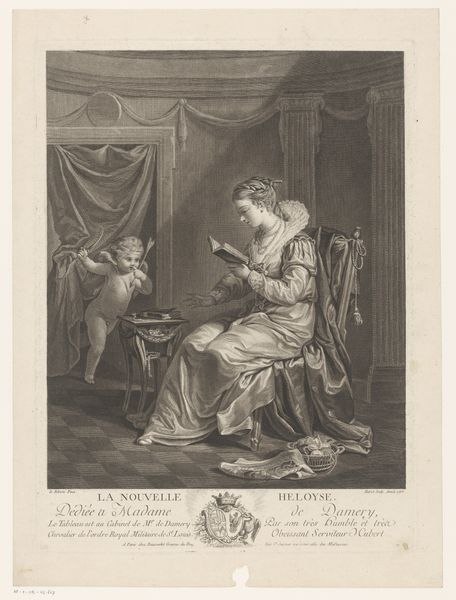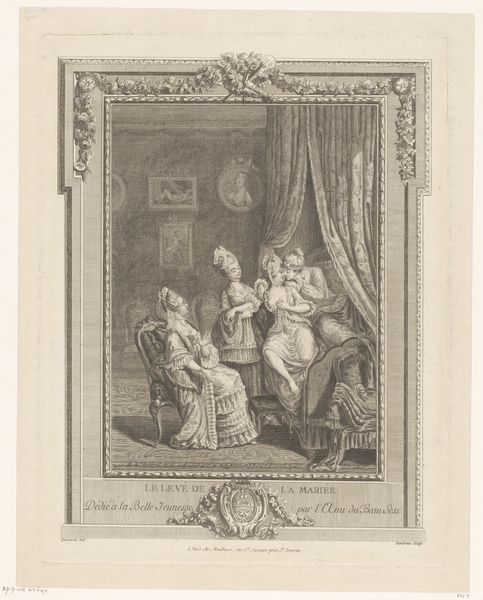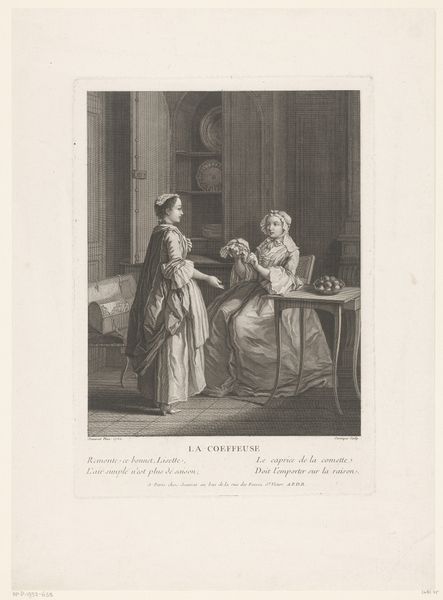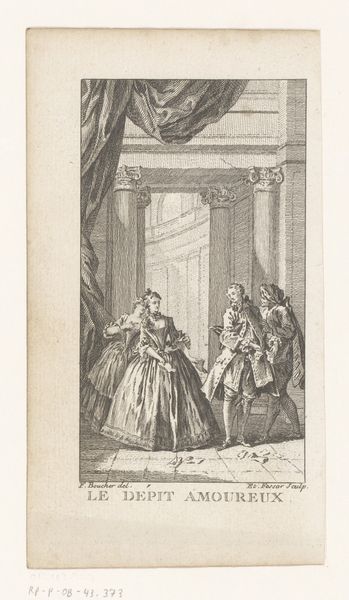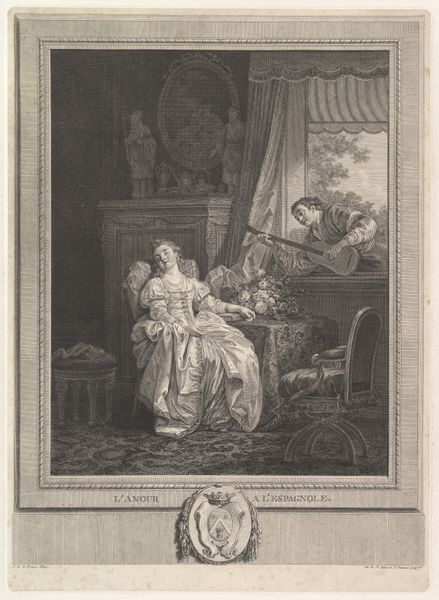
Dimensions: height 399 mm, width 282 mm
Copyright: Rijks Museum: Open Domain
Editor: Here we have "Liedverkoopster", or "La Marchande de Chansons" by P.L. Cor, created sometime between 1772 and 1779. It's a print made with lithography and etching techniques. There's almost a stage-like quality to the composition. What structural elements stand out to you? Curator: Indeed. Note how the window frame serves as an organizing principle. This architectural feature creates a defined space for the figures, emphasizing their relationship within a structured environment. The figures are rendered with remarkable balance, and yet one notices they don’t quite reach to either vertical edge of the stone-rendered ‘window.’ Have you noticed this asymmetry? Editor: Yes, it's subtle, but now that you point it out, the negative space on either side becomes more apparent. Does that imbalance serve a particular formal function? Curator: Precisely. The imbalance avoids pure symmetry, animating the viewing experience. Look closer, and tell me, what else seems remarkable? Editor: The differing textures. There's the smooth skin of the figures against the rough stone, and the ornate clothing juxtaposed with the implied cityscape. It directs one's gaze carefully through different areas, the eye wanting to linger on each. Curator: Yes, texture and finish animate what would be just another portrait from this era. Editor: So by isolating those elements—space, texture, and asymmetry—you’re able to unlock aspects of the creator’s intentions and of the composition as a whole. I didn't see that at first. Curator: Yes. Examining these features will unlock so much about what might initially be an object in simple Rococo style.
Comments
No comments
Be the first to comment and join the conversation on the ultimate creative platform.
